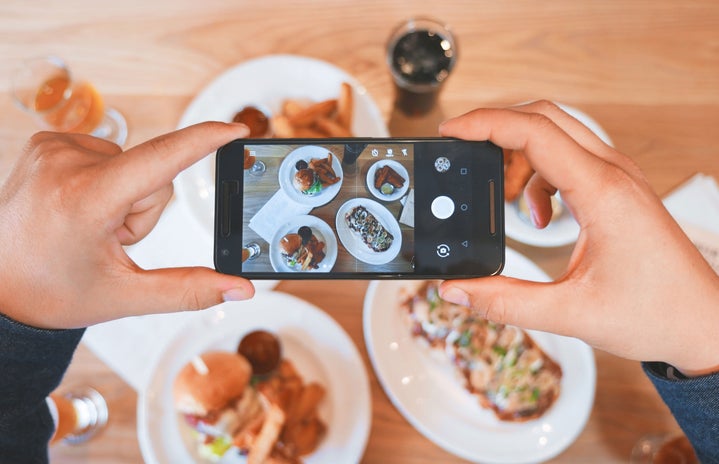In these essays I will explore contemporary artists, the majority of whom are women. Their artworks heavily explore issues within society. They focus on social issues such as that of identity, political concerns, and spatial relationships. Until the twentieth century, women, for the most part, were disregarded in the art world. Even now, I believe they deserve further recognition. The U.S media in particular has historically been a source of objectification. It has also been a country that excels in consumerism and fragmentation of images and ideas. Yet, it is also a place where gender and sexuality can flourish. These are both threads of the American conscience.
American photographer Catherine Opie explores the significance of the dynamics of these complex social relationships in her artwork. She uses a documentary-style type of photography combined with a fine arts finesse when producing her work. Not only does Catherine Opie make statements about the nature of communities and their positioning in society through her subjects, but it is also through her implementation of subtle modes of symbolism through abstraction. For example, through using a consistent color for the background, or framing her photos in an unusual way, Opie creates works that are described by the Guggenheim as offering “profound insights into the conditions in which communities form and the terms in which they are defined”.
In her first solo exhibition, Being and Having, Opie depicts close-up profiles of her friends wearing noticeably artificial facial hair, positioned against a bright mustard yellow background. The individuals stare straight at the camera as if confronting the viewer. By choosing for the subjects to look straight into the camera, by selecting such a distinct color as a constant for the backgrounds and tightly framing the subjects’ faces, Opie’s photographs achieve a look that is graphic and iconic, all the while creating an intimate space between the viewer and the artwork. On the frame of each photograph is a engraved label, like a metal tag that has the nickname of the individual. The tags ascribe to distinct group types within the lesbian and gay community, playing with characteristics and biases regarding masculinity, gang culture, and even race. The individual wears some aesthetic attribute in correspondence with the label that their aesthetic has been attached to. As “Blouin Art Info Blogs” concurs, in placing a “nametag on the frame, you emphasize the question of identity.”
“Bo” (and self portrait of the artist) (1991) from the series Being and Having by Catherine Opie
The photos make me wonder if Opie had the work of Andy Warhol in mind when creating this series. The work that reminded me of this connection is Warhol’s Marilyn Diptych. Marilyn Monroe who frequented the cover page of Life Magazine, who acted in films for Twentieth Century Fox, was America’s sex symbol for a large portion of the 20th century. Recognizing that Marilyn Monroe was an icon of idealized sexuality in America, perhaps Opie also plays with this aesthetic to explore themes of sexuality and gender that are central in her artwork. There are similarities in conceptual components. Opie’s name tags for her pieces correspond conceptually with the idea of a “stage name”. Marilyn Monroe’s name, for example, was really a pseudonym for the actress whose legal name was Norma Jean Mortenson. Film and the media exploited her sexuality as an asset and so did she, but in search for success and in search for finding peace in the relationship she had with her self worth, which was convoluted.
“Papa Bear”, “Chief”, “Jake” and “Chicken” (1991) from the series Being and Having by Catherine Opie
In Warhol’s Marilyn Diptych painting, Marilyn’s face in repeated on two five by five square grids, one in bright solid colors and the other in black and white. On the colorful silkscreen panel, Marilyn’ iconic face, which fills each rectangle on the canvas, almost looks like it belongs on a tin of canned food or a cardboard washing detergent box. Initially, one may view this image as reminiscent of a consumer based product of a sort, something hollow and artificial. The image of Marilyn on the top left corner of the silkscreen panel is perhaps the most natural looking in the set. As her image is repeated, alterations such as increased saturation of color and increased shadow affect the appearance of her face, giving it a more graphic look. This alteration is not timeless. In fact, it marks a period of time where print, newspapers, and magazines were at their peak in consumer popularity.
In manipulating the image, Warhol seems to trip Marilyn of her own identity and allude to her as a product. Perhaps, the black and white panel that accompanies the colorful one is there to reinforce this idea, however, I believe it focuses on a concept that transcends this meaning. On the black and white panel it looks as if though Marilyn’s face has been printed on several pieces of paper through an ink printer whose cartridge is running out of ink. Marilyn’s face becomes lighter and lighter, fading away into each white rectangle. On the second column to the left, Marilyn’s face is obscured by a vertical “blotch” of black ink, partially obscuring her face. Yet in the column furthest to the right, Marilyn’s face is barely there. The black and white silkscreen seems to liberate the actress from her imprisoning image as if she is entering a new space where images are not the focus, where the superficial layer is not what defines the value of a person, but essence.
“Marilyn Diptych” (1962) by Andy Warhol
This idea of essence and aesthetic and of limitation and fluidity is at the core of Opie’s work. In Orna Gularik’s essay on Being and Having, Gularik importantly notes that, “Considering [Opie’s] body of work as a whole reveals the relevance and importance of identity politics”. Identity politics is a certain political course taken by people of specific groups to “form exclusive political alliances”. Opie’s confrontational artwork urges the viewer to really think hard about these questions of identity with society, and even more to consider struggles in ideology, and conflict regarding biases within specific social groups and subcultures.
Check out other series of Opie’s work: Domestic, Ice Houses, High School Football, Girlfriends, and photos from the book: Rodarte

